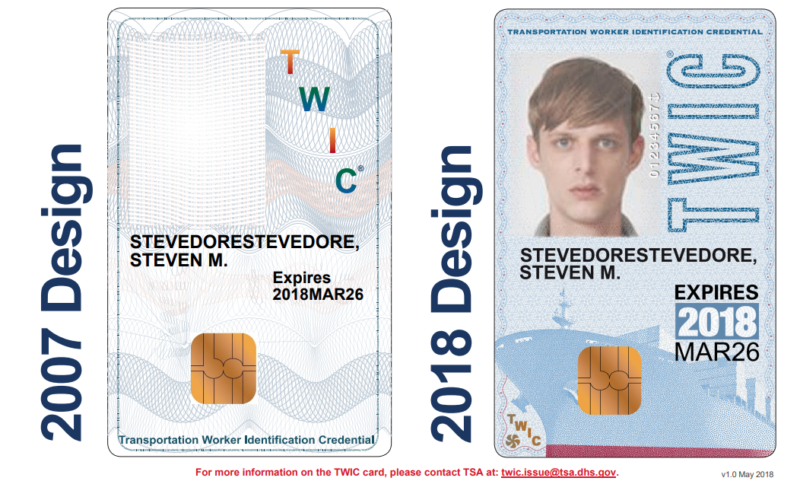If you are getting a Transportation Worker Identification Credential (TWIC) for the first time or renewing, the new credential will look a lot different and contain more security features than the old one.
The Transportation Security Administration, which oversees the TWIC program, has announced that the card is getting a facelift. On July 10, the TSA discontinued issuance of the 2007 design. While the 2007 design will no longer be issued, TWIC is a five-year credential. Thus, the old design will remain valid until 2023.
Called TWIC NexGen, the new design aims to deter counterfeiting and curb the fraudulent use of the credential by incorporating enhanced security features, the TSA said on its website. The new card is also designed to be compatible with qualified TWIC readers.
Current TWIC cards will remain valid until their expiration dates, and cardholders aren’t required to request a new or replacement card until the card expires.
Regulated facilities or vessels that require TWIC for access will accept and recognize both the current and new designs. As with the current credential, it will be valid for five years. The price will remain at $125.25 for first time and renewals and $60 for a replacement card.
This is the first design update since the TWIC was launched in 2007. The vast majority of regulated facilities and vessels often use the TWIC as a “flash pass” for entry, and the new card is designed to prevent an ongoing problem of counterfeiting.
Among the most visual changes: the card will contain more authentication features: 11 on the front and six on the back. The expiration date will be more prominent, there will be new images on the front like a compass, eagle and ship, and the card’s color will change at different angles.
Since the program began, there have been 3.1 million enrollments. There are currently 2.1 million active cards and 60,000 applicants have been deemed ineligible for the credential, according to TSA. The agency approves about 30,000 new enrollments a month.
The TWIC is required under the Maritime Transportation Security Act, which was passed as a security enhancement after the 9/11 terrorist attacks. The credential allows access to secure areas of maritime facilities and vessels. As part of the application process, TSA conducts a background check on applicants. Most mariners licensed by the Coast Guard are required to carry the credential.
TWIC has been widely criticized within the maritime community over the years for being burdensome and costly while providing little security improvements. Many in the industry are encouraging the Trump administration to eliminate the program as part of a wider effort to trim overreaching federal regulations.





